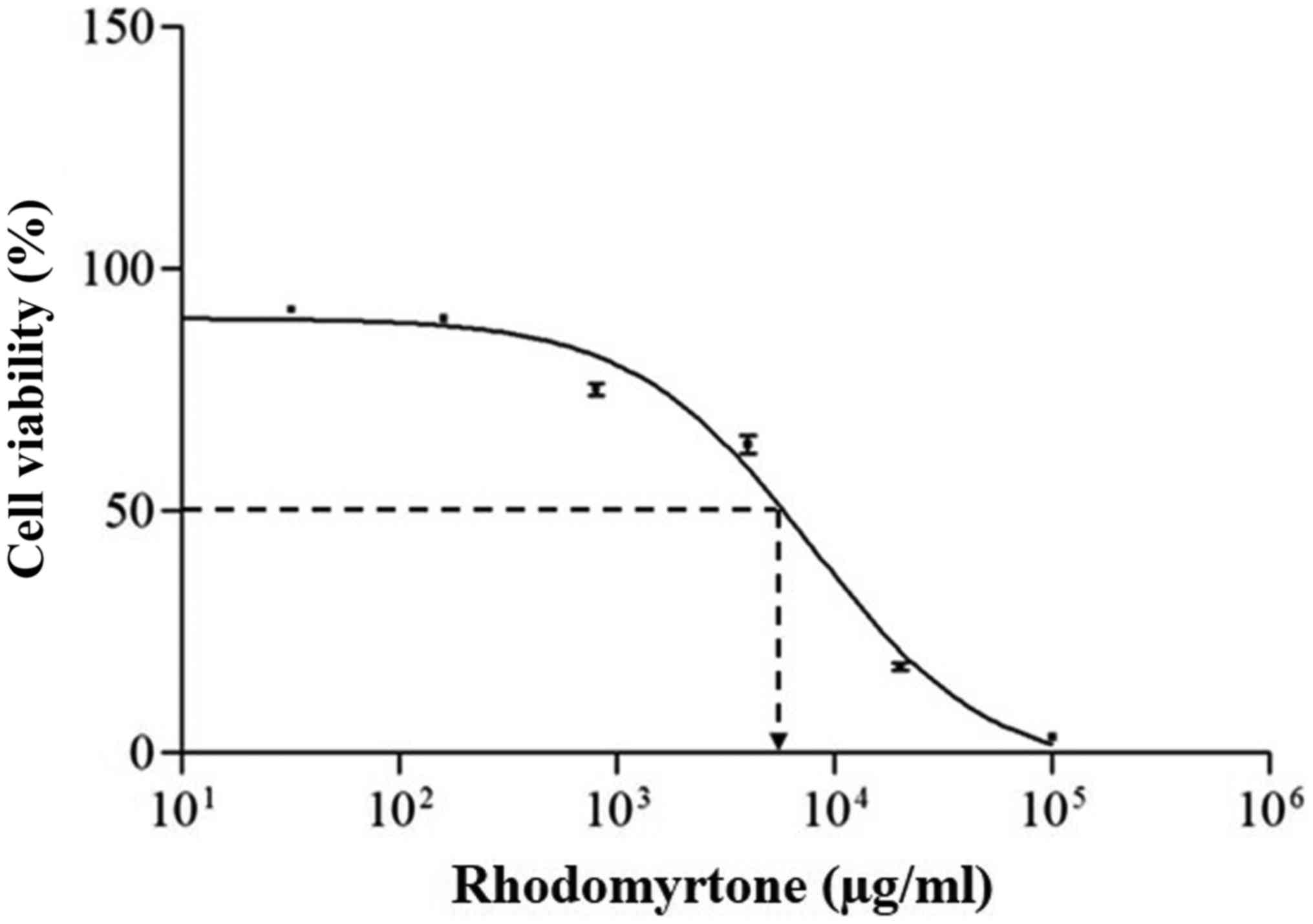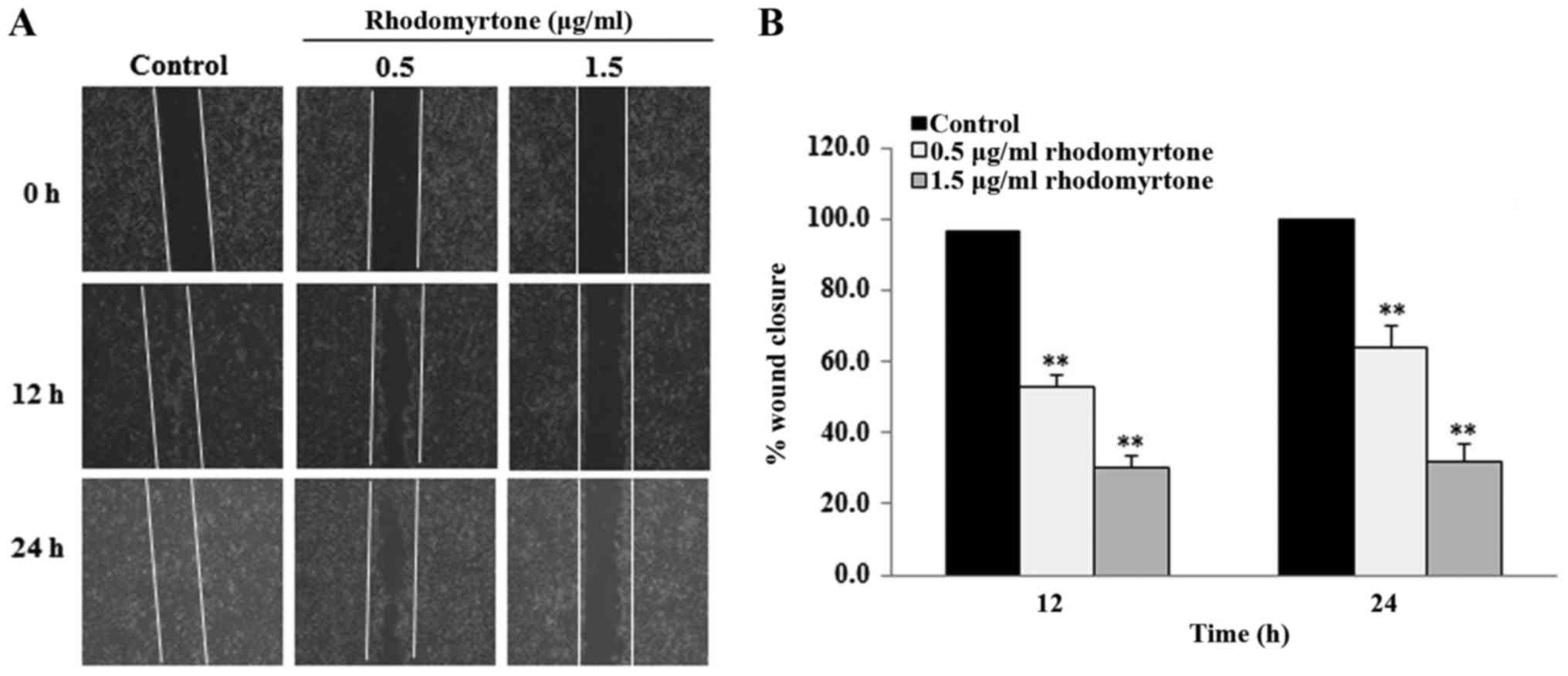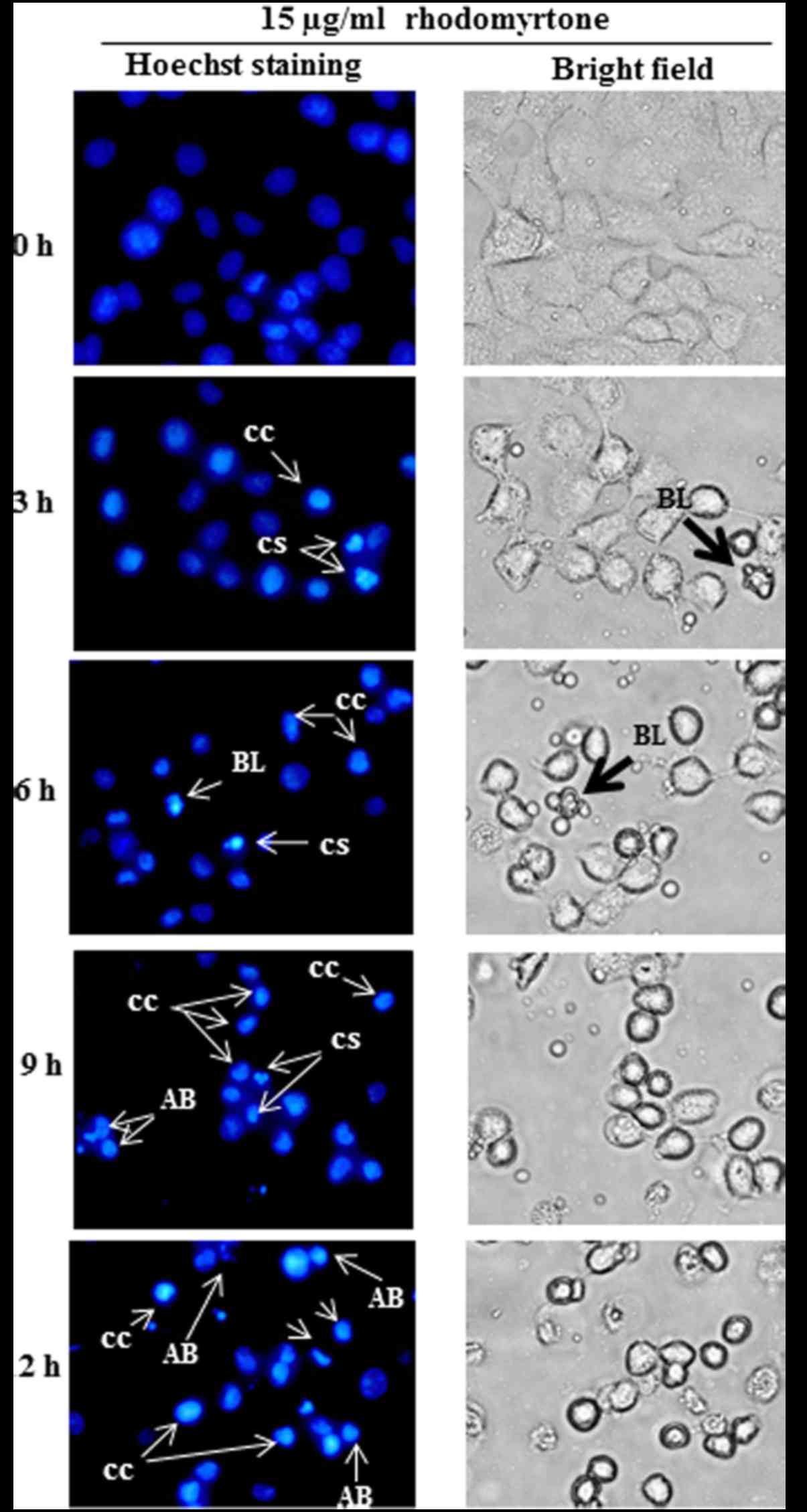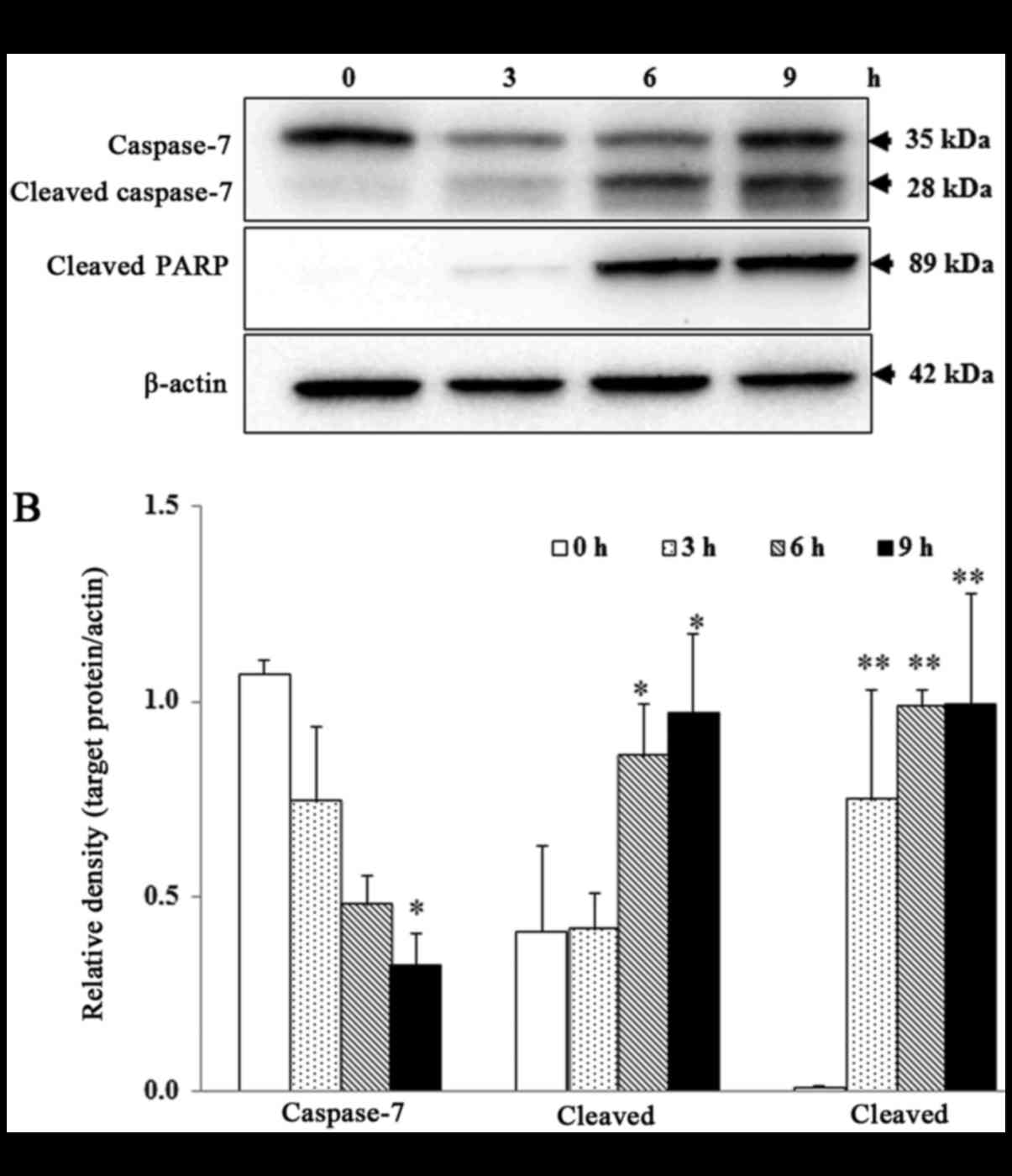|
1
|
Panthong A, Kanjanapothi D, Taesotiku T
and Taylor WC: Ethnobotanical review of medicinal plants from Thai
traditional books, Part II: Plants with antidiarrheal, laxative and
carminative properties. J Ethnopharmacol. 31:121–156. 1991.
View Article : Google Scholar : PubMed/NCBI
|
|
2
|
Wei F: Manufacture of oral liquid
containing traditional Chinese medicine extract for treating
gynecopathy [Guangxi Huahong Pharmaceutical Co., Ltd, People's
Republic of China; Shanghai Fosun Pharmaceutical (Group) Co., Ltd],
Faming Zhuanli Shenqing Gongkai Shuomingshu. China Patent
CN1846715. Filed April 13, 2005; issued October 18. 2006.
|
|
3
|
Wei F: Manufacture of traditional Chinese
medicine composition for treating urinary tract infection Gungxi
Huahong Pharmaceutical Co., Ltd, People's Republic of China;
Shanghai Fosun Pharmaceutical (Group) Co., Ltd, Faming Zhuanli
Shenqing Gongkai Shuomingshu. China Patent CN1853687. Filed April
29, 2005; issued November 1. 2006.
|
|
4
|
Panthong A, Kanjanapothi D and Taylor WC:
Ethnobotanical review of medicinal plants from Thai traditional
books, Part I: Plants with anti-inflammatory, anti-asthmatic and
antihypertensive properties. J Ethnopharmacol. 18:213–228. 1986.
View Article : Google Scholar : PubMed/NCBI
|
|
5
|
Ong HC and Nordiana M: Malay ethno-medico
botany in Machang, Kelantan, Malaysia. Fitoterapia. 70:502–513.
1999. View Article : Google Scholar
|
|
6
|
Miyake Y and Nojima J: Skin Cosmetic and
Food/Drink for Cosmetrogical Use. Maruzen Pharmaceutical Co., Ltd.,
Hiroshima, Japan. Japan Patent JP2006199678A. Filed December 6,
2005; issued August 3. 2006.
|
|
7
|
Limsuwan S, Trip EN, Kouwen TR, Piersma S,
Hiranrat A, Mahabusarakam W, Voravuthikunchai SP, van Dijl JM and
Kayser O: Rhodomyrtone: A new candidate as natural antibacterial
drug from Rhodomyrtus tomentosa. Phytomedicine. 16:645–651.
2009. View Article : Google Scholar : PubMed/NCBI
|
|
8
|
Limsuwan S, Hesseling-Meinders A,
Voravuthikunchai SP, van Dijl JM and Kayser O: Potential antibiotic
and anti-infective effects of rhodomyrtone from Rhodomyrtus
tomentosa (Aiton) Hassk. On Streptococcus pyogenes as revealed
by proteomics. Phytomedicine. 18:934–940. 2011. View Article : Google Scholar : PubMed/NCBI
|
|
9
|
Voravuthikunchai SP, Dolah S and
Charernjiratrakul W: Control of Bacillus cereus in foods by
Rhodomyrtus tomentosa (Ait.) Hassk. leaf extract and its
purified compound. J Food Prot. 73:1907–1912. 2010. View Article : Google Scholar : PubMed/NCBI
|
|
10
|
Saising J, Ongsakul M and Voravuthikunchai
SP: Rhodomyrtus tomentosa (Aiton) Hassk. ethanol extract and
rhodomyrtone: A potential strategy for the treatment of
biofilm-forming staphylococci. J Med Microbiol. 60:1793–1800. 2011.
View Article : Google Scholar : PubMed/NCBI
|
|
11
|
Srisuwan S, Tongtawe P, Srimanote P and
Voravuthikunchai SP: Rhodomyrtone modulates innate immune responses
of THP-1 monocytes to assist in clearing methicillin-resistant
Staphylococcus aureus. PLoS One. 9:e1103212014. View Article : Google Scholar : PubMed/NCBI
|
|
12
|
Chorachoo J, Saeloh D, Srichana T,
Amnuaikit T, Musthafa KS, Sretrirutchai S and Voravuthikunchai SP:
Rhodomyrtone as a potential anti-proliferative and apoptosis
inducing agent in HaCaT keratinocyte cells. Eur J Pharmacol.
772:144–151. 2016. View Article : Google Scholar : PubMed/NCBI
|
|
13
|
Scherer D and Kumar R: Genetics of
pigmentation in skin cancer-a review. Mutat Res. 705:141–153. 2010.
View Article : Google Scholar : PubMed/NCBI
|
|
14
|
Rigel DS: Cutaneous ultraviolet exposure
and its relationship to the development of skin cancer. J Amer Acad
Dermatol. 58:129–132. 2008. View Article : Google Scholar
|
|
15
|
Afaq F: Natural agents: Cellular and
molecular mechanisms of photoprotection. Arch Biochem Biophys.
50:144–151. 2011. View Article : Google Scholar
|
|
16
|
Bowden GT: Prevention of non-melanoma skin
cancer by targeting ultraviolet-B-light signaling. Nat Rev Cancer.
4:23–35. 2004. View
Article : Google Scholar : PubMed/NCBI
|
|
17
|
Lu MK, Shih YW, Chien Chang TT, Fang LH,
Huang HC and Chen PS: α-Solanine inhibits human melanoma cell
migration and invasion by reducing matrix metalloproteinase-2/9
activities. Biol Pharm Bull. 33:1685–1691. 2010. View Article : Google Scholar : PubMed/NCBI
|
|
18
|
Wyllie AH, Kerr JF and Currie AR: Cell
death: The significance of apoptosis. Int Rev Cytol. 68:251–306.
1980. View Article : Google Scholar : PubMed/NCBI
|
|
19
|
Fan TJ, Han LH, Cong RS and Liang J:
Caspase family proteases and apoptosis. Acta Biochim Biophys Sin
(Shanghai). 3:719–727. 2005. View Article : Google Scholar
|
|
20
|
Mehmet H: Caspases find a new place to
hide. Nature. 403:29–30. 2000. View
Article : Google Scholar : PubMed/NCBI
|
|
21
|
Shi Y: Mechanisms of caspase activation
and inhibition during apoptosis. Mol Cell. 9:459–470. 2002.
View Article : Google Scholar : PubMed/NCBI
|
|
22
|
Yang J, Liu X, Bhalla K, Kim CN, Ibrado
AM, Cai J, Peng TI, Jones DP and Wang X: Prevention of apoptosis by
Bcl-2: Release of cytochrome c from mitochondria blocked. Science.
275:1129–1132. 1997. View Article : Google Scholar : PubMed/NCBI
|
|
23
|
Tancharoen W, Teeraaungkul S, Krajarng A,
Nilwarangoon S and Watanapokasin R: Apoptosis induction by
rafflesia kerrii meijer flower extract via caspase-dependent and
down-regulation of ERK signaling pathway in epidermoid carcinoma
cells. J Mod Med Chem. 1:37–42. 2013.
|
|
24
|
Tian R, Li Y and Gao M: Shikonin causes
cell-cycle arrest and induces apoptosis by regulating the
EGFR-NF-κB signaling pathway in human epidermoid carcinoma A431
cells. Biosci Rep 35: pii: e00189. 2015. View Article : Google Scholar
|
|
25
|
Zhu Y, Mao Y, Chen H, Lin Y, Hu Z, Wu J,
Xu X, Xu X, Qin J and Xie L: Apigenin promotes apoptosis, inhibits
invasion and induces cell cycle arrest of T24 human bladder cancer
cells. Cancer Cell Int. 13:542013. View Article : Google Scholar : PubMed/NCBI
|
|
26
|
Tsang CM, Lau EP, Di K, Cheung PY, Hau PM,
Ching YP, Wong YC, Cheung AL, Wan TS, Tong Y, et al: Berberine
inhibits Rho GTPases and cell migration at low doses but induces G2
arrest and apoptosis at high doses in human cancer cells. Int J Mol
Med. 24:131–138. 2009.PubMed/NCBI
|
|
27
|
Pal CH, Sharma S, Elmets AC, Athar M and
Afaq F: Fisetin inhibits growth, induces G2/M arrest and
apoptosis of human epidermoid carcinoma A431 cells: Role of
mitochondrial membrane potential disruption and consequent caspases
activation. Exp Dermatol. 22:470–475. 2013. View Article : Google Scholar : PubMed/NCBI
|
|
28
|
King KL and Cidlowski JA: Cell cycle
regulation and apoptosis. Annu Rev Physiol. 60:601–617. 1998.
View Article : Google Scholar : PubMed/NCBI
|
|
29
|
Li D, Wu LJ, Tashiro S, Onodera S and
Ikejima T: Oridonin-induced A431 cell apoptosis partially through
blockage of the Ras/Raf/ERK signal pathway. J Pharmacol Sci.
103:56–66. 2007. View Article : Google Scholar : PubMed/NCBI
|
|
30
|
Yim NH, Kim A, Liang C, Cho WK and Ma JY:
Guibitang, a traditional herbal medicine, induces apoptotic death
in A431 cells by regulating the activities of mitogen-activated
protein kinases. BMC Complement Altern Med. 14:3442014. View Article : Google Scholar : PubMed/NCBI
|
|
31
|
Soliman MF, Fathy MM, Salama MM, Al-Abd
MA, Saber RF and El-Halawany AM: Cytotoxic activity of
acylphloroglucinols isolated from the leaves of Eucalyptus
cinerea F. Muell. ex Benth. cultivated in Egypt. Sci Rep.
4:54102014. View Article : Google Scholar : PubMed/NCBI
|
|
32
|
Bravo-Cordero JJ, Hodgson L and Condeelis
J: Directed cell invasion and migration during metastasis. Curr
Opin Cell Biol. 24:277–283. 2012. View Article : Google Scholar : PubMed/NCBI
|















